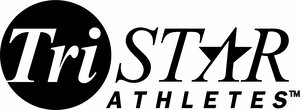Teach the body to burn fat at the right ♥ rate
Go easier to burn more fat?
Low intensity training by effort and heart rate is a great way to chip away at fat stores in the body when done correctly. It may feel guilt provokingly easy at times and seem like you are not doing much, however, it is at this particular output where physiologically speaking we see the greatest level of fat burning.
The old added “no pain no gain” does not apply here and this is in part due to the sophistication of the human body and its physiological needs!
Specially we are talking steering your heart rate towards zone two which is calculated as ~60-70% of your maximum ♥ rate for those doing more general activity and a basic calculation you can use to find your maximum heart rate is 220 minus your age.) (Consult your physician before undertaking any new ♥ rate based training).
A more advanced calculation for endurance sports is based upon the lactate threshold heart rate (Threshold is the average max heart rate you could sustain for ~45minutes to one hour in an all out effort of for example biking or running.) Apply the percentages below to find your ideal fat burning zone.
Keep in mind that as your heart rate rises, you will burn more calories. However, burning more calories and raising your heart into Zone 3, 4 or 5 won’t necessarily burn more fat. In these zones, you use more of your storage of sugars (glycogen) and carbohydrates as energy. By staying in this more moderate range of heart rate zone two, about 50-85% of the calories you burn comes from your fat stores, with the rest coming from carbohydrates and protein.
When you burn fat in this way, it is easier to lean out due to the fact that fat does not need to be replaced in the way that carbohydrate does. Carbohydrates help to keep the body moving, idling and your brain thinking. Without it we get low blood sugar, hungry, and weak with carbohydrate depletion. When trying to eat a modest diet in a leaning out phase it can be very hard to lean out since you will have low energy available to exercise due to carb insufficiency. The goal should be to train at low heart rate and intensity to chip away at the fat stores.
Using rate of perceived effort
Using rate of perceived effort or a subjective rating of how hard your activity is can also help you to get into the fat burning zone. In general, the goal should be to stay at a rate of perceived effort of four or less, “fairly light”. You can use your heart rate monitor to see how close your rate of perceived effort is to your heart rate zone two.
For those just getting back into exercise their perceived effort will be lower and heart rate likely higher. For these folks sticking to heart rate is key and getting a heart rate monitor more essential. More advanced and or fit individuals may find a lower heart rate with higher rate of perceived effort.
Common questions about this type of training
1. What happens if i go above the target heart rate zone?: You won’t lose the benefit of the training, however you will be steadily drawing down on carbohydrates and not necessarily as much in terms of fat. You total calories burned will be higher but not as much of the right calorie source, fat. Stick to the zones and perceived efforts as best you can. Not every activity will present itself as a fat burning type of session.
2. What if the higher heart rate feels easy, should I stick to heart rate or just go by feel? if the goal is to train the physiology and work the fat stores, stick to the heart rate.
3. I have been doing this approach but don’t seem to be leaning out: Circle back on other areas of your diet and food quality and timing as starting points for your lean out adjustments. Or try to go even easier and lower with the heart rate.
4. Im walking most of the time instead of running… are my zones and calculations off for me? Sadly physiology does not care about our ego’s and walking will get the job done just as well. Dont think you have to run to get leaner. You have to be active in the right efforts and energy systems as well as timed with you nutrition and approach. There is also nothing wrong with adopting a run walk approach.




